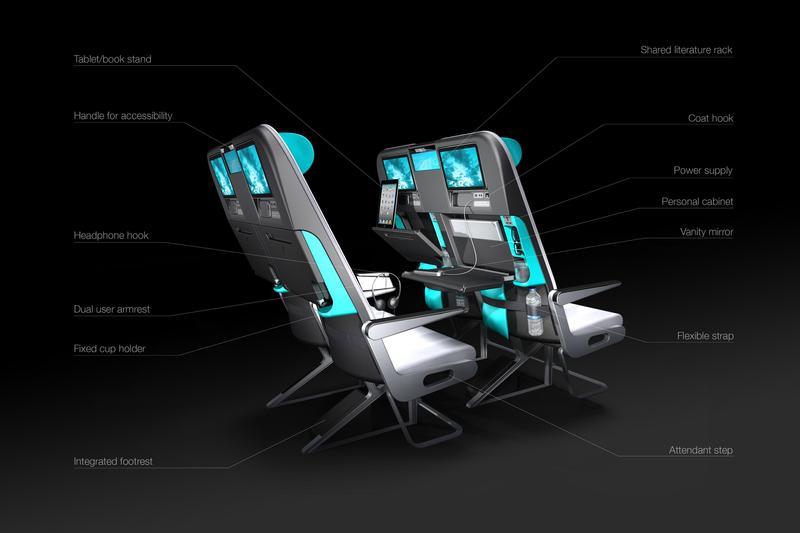2023 Galleries
The Spark Gallery pages are one of our most popular design destinations, with thousands of visitors each year. Check out some of the latest Spark entries, in the galleries below.
Galleries // 2012 Spark:Concept // Meerkat Seat Concept
Meerkat Seat Concept
Winner - Silver
Competition: Spark:Concept
Designer: Mr. James Shing Hin Lee - Director
Design Type: Aircraft Seat
Website: http://www.paperclipdesign.hk
While airline passengers these days expect more and more creature comforts on their flights, airlines on the other hand need to trim cost. These two criteria however are often contradictory- new features are likely to add weight and complexity, and hence increase cost of operations. The challenge for designers is therefore to create a product that has all the features passengers desire, yet keep the package lightweight & elegant in order to minimize fuel burn & maintenance cost. This in turn reduces the associated carbon emission, which is becoming more important as environmental regulations tighten. The Meerkat is a concept design for long haul economy class seating that addresses this challenge with a number of innovations. For passengers, comfort is paramount especially on long flights. Yet with space at such premium, airlines are not ready to give economy class passengers any extra room. The Meerkat introduces new ways to maximize comfort within the limited space: by means of a simple geometry, the patented double-deck armrest allows neighboring passengers to use the armrest at the same time, eliminating the elbow war that has forever haunted economy class passengers. The backrest cushion, with its lower end detachable from the seatback, can be configured to aid passengers recline and stretch-out, making full use of the space underneath the seat in front to improve sleeping comfort. For airlines, minimizing weight is critical particularly for long flights because the effect of weight on fuel cost grows exponentially as sector length increases. For this reason many of Meerkat’s components are multifunctional in order to bring in extra features without increasing weight. For example, the tray table cleverly functions as a tablet PC stand (or a book stand) when half opened, and forms the door of the personal cabinet when locked, while the seat legs doubles as footrests for the row behind. Maintenance cost is another concern in the airline’s perspective given that seats are becoming more and more feature-packed. A simple, robust design that is less prone to damage not only saves maintenance cost, but also ensures consistent defect-free experience for all passengers. On that front, the Meerkat introduces a fixed cup holder attached directly onto the seatback through a carve-out on the table, eliminating the delicate flip-down ones that are often a maintenance headache for engineers. On the other hand the vanity mirror, an amenity that is gaining popularity, piggy-backs on the reverse side of the entertainment handset, ensuring maximum convenience with minimal parts. The Meerkat also makes creative use of things beyond the seat itself to achieve further benefits. For example, a shared literature rack between seats allows inflight magazines, which can weigh up to 2kg per person on international carriers, to be cut by up to 50%; The backrest cushion makes use of passengers’ own belongings, like a bag, to create a deep recline without mechanisms, while clearing up under-seat space for passenger’s legs at the same time. Furthermore, a hook for the headphone is formed when the headphone’s own uniquely shaped plug is inserted into the audio socket- in this way the hook only exists only when needed, ensuring safety with minimal complexity. Comfortable, simple, lightweight, yet full of useful features, the Meerkat is a well thought through design that takes into account the needs of both passengers as well as airlines. Put simply, the Meerkat is a seat for passengers, a seat for airlines, as well as a seat for the environment.

